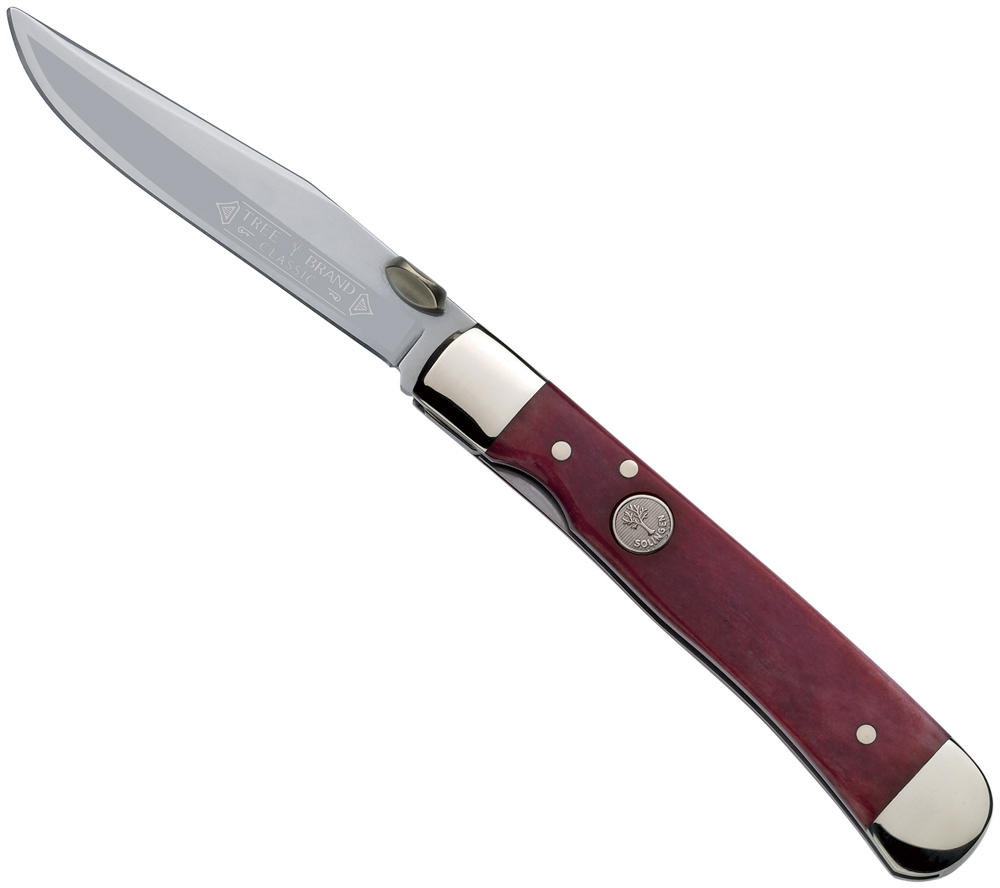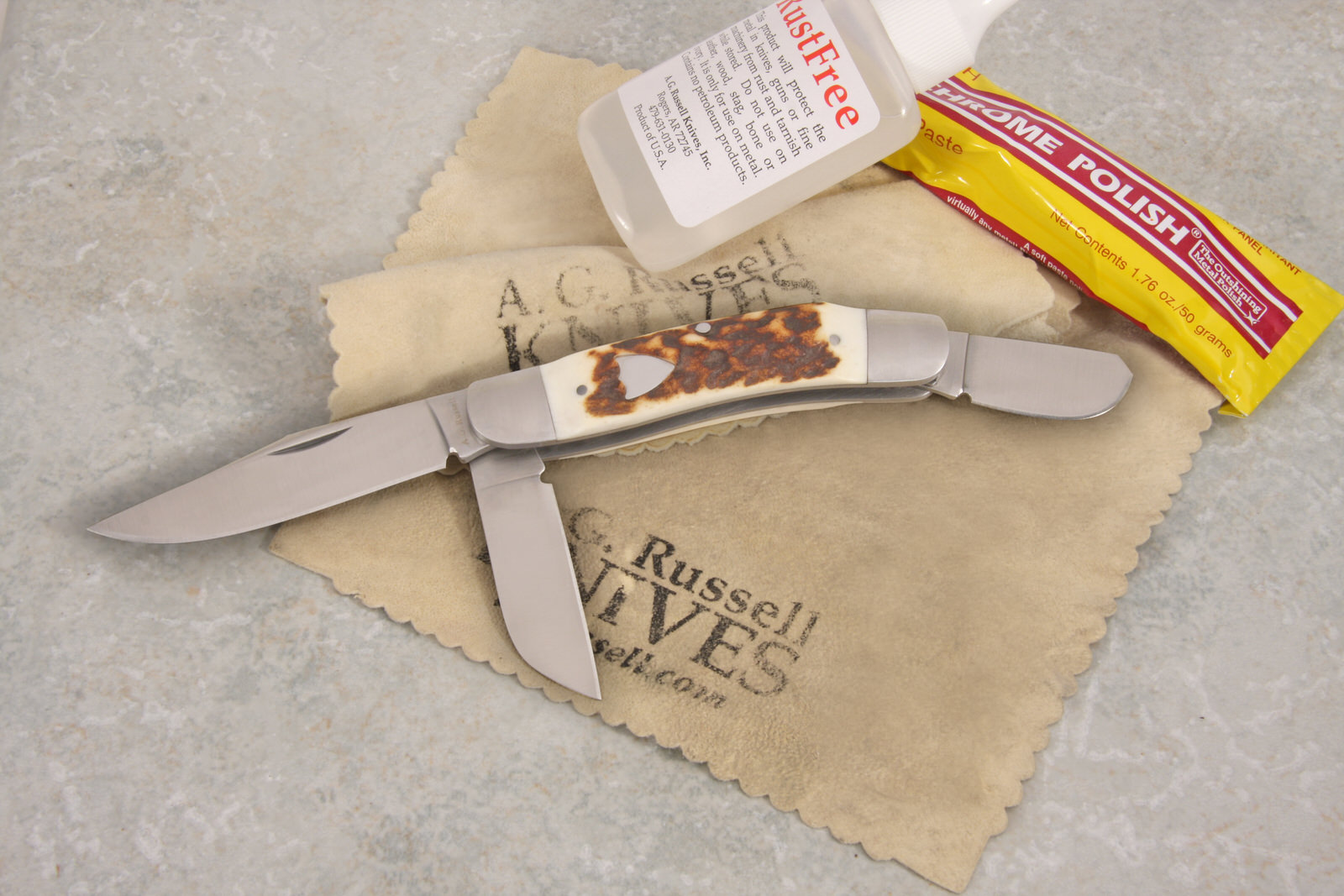What Does Bone Handle Knives Mean?
Wiki Article
Bone Handle Knives - Truths
Table of ContentsBone Handle Knives for BeginnersGet This Report on Bone Handle KnivesThe Definitive Guide for Bone Handle KnivesThe Greatest Guide To Bone Handle Knives5 Easy Facts About Bone Handle Knives ShownBone Handle Knives Fundamentals Explained
Nothing looks as rich and natural as cream color, brightened horn, covering, or reefs. It is rather common to see a fork of an antler used to sustain or elevate a knife on a display screen stand, and though that is where many of us begin in our mission to display a blade, a development of that procedure is unpreventable in the finer functions.Along with wood, horns and also horns are most likely the earliest blade manage product. Horn and horn can be left rough, refined, or sculpted, in some cases scrimshawed or distinctive. Though they are comparable and also frequently described in the very same reference, there are some crucial distinctions. Horn is mainly a derivation of hair, in fact hollow sheaths of keratin, snugly compressed and also stuffed in a strong development.
Horns are generally a lot more dense than horns. Antlers are a permeable bony appendage that are dropped every year, so antlers are a sustainable source.
The smart Trick of Bone Handle Knives That Nobody is Discussing
Some antlers are much better than others. Frequently, the terms horn and horn as well as stag are swapped, which can create some confusion. Each one should have some unique interest: (also called stag horn, deer horn): In America, this comes from the annual sheds of both the Mule Deer and the Whitetail Deer.They are probably the least pricey of take care of products on this web page. Schedule is great, use characteristics are poor to reasonable. Look is reasonable, contaminate staining is frequent. The most effective use deer antler is by mindful choice of thick, heavy sections that are on the surface area of the antler.
See stabilized horn listed below. Polishes well. (likewise called Elk horn) Originates from the yearly sheds of the American Elk, a big deer species in America. Elk horns are absolutely an action up from deer horns, as they are thicker, stronger, with a smaller main section of porous material, as well as a thicker external density.
The Ultimate Guide To Bone Handle Knives
Appearance is fair, contaminate discoloration is constant. Just like deer horn, the most effective usage is by mindful selection of thick, heavy parts that are on the surface of the horn. The only irreversible method of building and use for a fine custom blade is to have the horn skillfully stabilized.Polishes well. (also called Stag, India Stag, Stag, Axis Stag, Red Stag, Cut Stag, Midnight Stag): Comes from the Sambar deer or Cheetal deer of India as well as the Pacific edge nations. There was an embargo on Indian Sambar that was raised as soon as then reapplied, yet the horn is readily available with various other countries, and materials can be located around the internet, their explanation so don't think it is in any kind of way uncommon.
 Unlike deer and elk horn, it is hard, difficult, solid and also dense. As opposed to a big permeable central core, it has a little core, as well as a very strong external covering, expanding through the majority of the horn. It can have a beautiful brown textured surface, making it extremely eye-catching for knife deals with, and also a protected, comfy clutching surface area.
Unlike deer and elk horn, it is hard, difficult, solid and also dense. As opposed to a big permeable central core, it has a little core, as well as a very strong external covering, expanding through the majority of the horn. It can have a beautiful brown textured surface, making it extremely eye-catching for knife deals with, and also a protected, comfy clutching surface area.The smart Trick of Bone Handle Knives That Nobody is Discussing
 Crowns are the thick, vast flaring parts of the horn where it connects to the animal's head. The crowns are normally made use of on surprise tang knives, where the flavor is inserted into an opening drilled in the core of the horn and protected with pins, epoxy, or hidden approaches. This creates a manage that appears as a strong piece of antler flaring bent on the crown at the butt.
Crowns are the thick, vast flaring parts of the horn where it connects to the animal's head. The crowns are normally made use of on surprise tang knives, where the flavor is inserted into an opening drilled in the core of the horn and protected with pins, epoxy, or hidden approaches. This creates a manage that appears as a strong piece of antler flaring bent on the crown at the butt.Antler crowns are likewise carved right into belt buckles, conchos, or various other jewelry or adornment as well as installations. The most long-term technique of building and construction as well as usage for a great customized blade is to have the horn skillfully maintained, unless it's Sambar Stag which is rather challenging as well as resilient.
Exact same security as horns above.: There are ways to treat the antler before as well as after it is placed on a knife that change the wear attributes, the appearance, as well as the sturdiness. One method is fire therapy, which sheds the surface area to a darker shade, and also sets it somewhat. Stag can also be tinted by spots or potassium permanganate baths.
Some Of Bone Handle Knives
Most likely the ultimate is stress stablizing, done by several firms across this nation, where liquid phenolics are forced under wonderful pressures right into the porosity of the material to load any type Clicking Here of gaps and also basically water-proof the material. The very same procedure is utilized on woods (see my wood knife take care of page below).Kudu horn is similar fit as well as surface, both may be pressure maintained and sealed.: These are similar. They vary in shape, they have heavy ridges or structure along their size so that might in grasp safety when placed on a blade deal with. Their stability is the exact same as her latest blog any type of antler, as well as they are generally available.
A lot of the horns and antlers detailed on this web page can be supported, that is impregnated with dyes as well as resinous or phenolic liquid plastics (polymers or phenolics) at high pressures, essentially making a block of plasticized horn material. Bone Handle Knives. Though this is done some, I think it holds a huge opportunity to stabilizing companies in the future.
4 Simple Techniques For Bone Handle Knives
I intend that the expenditure of stabilization is also high, and low-end knives are better matched to the use of non-stabilized horn as well as horn product. I do have some maintained horn, however, and it works effectively. Ivories are animal teeth. Cream colors and also tusks are unusually dense, a few of the densest, hardest animal parts as well as continues to be.Report this wiki page